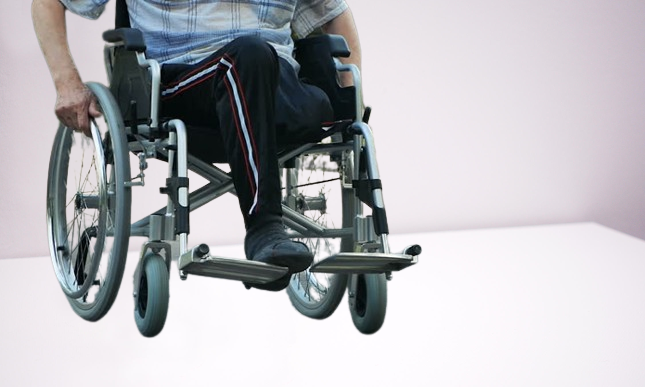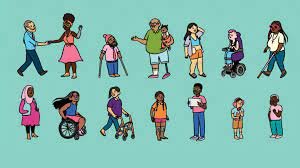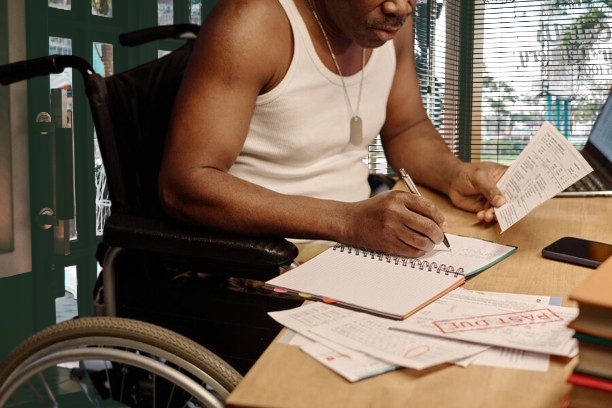Access to Education for Women with Disabilities:
Education is the cornerstone of both individual and society growth; it is a lighthouse that illuminates the way to self-determination and opens doors to a wide range of options. But even though inclusive education has come a long way in recent years, there are still strong obstacles that prevent women with disabilities from receiving a high-quality education. This essay seeks to examine the difficulties encountered by women who are disabled and/or gender nonconforming, to examine the critical role that inclusive education plays, and to offer all-encompassing solutions that can improve accessibility and advance equality in the field of education.

The Intersectionality of Gender and Disability
Understanding the intersections of gender and disability is essential to fully appreciating the difficulties faced by women with disabilities. In addition to managing a complicated web of cultural expectations, gender conventions, and the physical and mental challenges imposed by their disability, women at this junction frequently experience exacerbated discrimination. Since these factors interact to generate a unique set of barriers to education, addressing the various needs of this excluded group will require thoughtful, customized solutions.
Barriers to Education for Women with Disabilities
-
Physical Barriers
The physical barrier that separates educational institutions from women with disabilities is one of the most obvious and widespread issues they encounter. Many colleges and universities still lack the necessary infrastructure, such as elevators and ramps, to properly serve students with mobility issues. Women with impairments are physically excluded from the classroom, which limits their participation in extracurricular activities and makes it difficult for them to participate completely in the educational process. Removing these physical obstacles calls for a thorough renovation of the infrastructure, guaranteeing that learning environments are planned with everyone’s accessibility in mind. Buildings that promote inclusion must have ramps, elevators, accessible restrooms, and other assistive technologies installed.

-
Lack of Specialized Resources
When it comes to offering women with disabilities the specific resources and support they need, educational institutions frequently fall short. Frequently, there is a dearth of assistive technologies, customized learning materials, and qualified staff who can meet the special needs of children with different disabilities. Lack of these tools makes it more difficult for women with disabilities to be included in mainstream schooling, which feeds the cycle of exclusion. Purchasing specialized resources is essential. This entails creating learning resources that have been modified, integrating assistive technology into regular classrooms, and preparing teachers to effectively meet the various learning requirements of women with disabilities.
-
Discrimination and Stigma
Discriminatory attitudes and widespread preconceptions about disability have a major role in the marginalization and discrimination of women with disabilities in educational environments. Prejudices perpetrated by educators and peers can create a hostile learning environment that negatively affects women with disabilities’ academic performance and self-esteem. To effectively combat discrimination and stigma, a multifaceted strategy is needed. Awareness campaigns that dispel prejudices, encourage empathy, and advance an inclusive culture must be implemented in educational institutions. In order to create an environment that supports women with disabilities in their academic endeavors, it is equally important to train educators to identify and eliminate unconscious biases.
-
Economic Barriers
The obstacles that women with disabilities have when trying to further their education are exacerbated by economic concerns. Due to conventional gender conventions, families may place a higher priority on the education of their male siblings than that of their female relatives who have disabilities. Furthermore, the expenses related to disability, such medical care and assistive technology, might put a pressure on family finances and prevent some women with disabilities from going to school. Programs for targeted financial support are necessary to alleviate economic hurdles. The financial burden of education can be lessened for individuals and their families by means of scholarships, grants, and subsidies created especially for women with disabilities.
The Importance of Inclusive Education
Regardless of a student’s talents or limitations, inclusive education is a revolutionary strategy that seeks to provide equitable opportunity for all. Adopting an inclusive strategy enhances the educational community as a whole in addition to helping students with disabilities. The following main benefits emphasize how important inclusive education is:
-
Social Integration
Students with and without impairments are brought together in inclusive education, which promotes social integration. By fostering empathy, understanding, and respect among students, this integration dispels prejudices and builds a more diverse community. Social interaction is beneficial outside of the classroom as well. Through promoting connections among students with varying abilities, inclusive education establishes the foundation for a community that embraces variety and recognizes the unique contributions of each person.

-
Improved Academic Performance
Studies show that inclusive environments generally result in improved academic performance for kids with impairments. In addition to fostering teamwork, the diverse learning environment aids in the development of students’ non-academic proficiencies including communication and problem-solving.
The idea that cognitive ability alone determines academic success is contested by inclusive education. Through acknowledging and fostering each student’s unique gifts regardless of ability, inclusive education creates a learning atmosphere in which all kids can succeed academically.
-
Enhanced Self-Esteem
Positive self-image development is facilitated by inclusive education for kids with impairments. These kids are able to identify their skills when they attend regular schools, which helps them feel like they belong and are valuable. In an inclusive setting, the benefits on self-esteem accrue to every kid. All parties involved gain mentally from inclusive education’s supportive environment, which fosters a culture of acceptance and celebration of differences.
-
Preparation for Inclusive Societies
All pupils are better prepared for a varied and inclusive society through inclusive education. It gives students the talents and mindsets necessary to engage with individuals of various capacities, fostering an environment of equality and acceptance. Beyond the classroom, inclusive education has several advantages. The capacity to function well in inclusive settings is an important life skill that equips students to take an active role in an inclusive society in an increasingly diverse and interconnected world.
-
Strategies to Enhance Accessibility
a. Infrastructure Development
One of the most important steps in making sure that educational institutions meet the various demands of every student is to invest in accessible infrastructure. Frequent accessibility audits must to be carried out in order to detect and resolve any obstacles, be they technological or physical.
Adhering to universal design principles is crucial for establishing a welcoming atmosphere. To guarantee that infrastructure development is compliant with best practices for accessibility, educational institutions should work in conjunction with architects, accessibility specialists, and disability advocacy groups.
-
Teacher Training
In order to create an inclusive learning environment, educators are essential. It is crucial to give educators thorough training on inclusive teaching strategies, comprehending different learning demands, and dealing with unconscious biases. With the help of this training, teachers will be better equipped to establish a welcoming environment for every student, promoting an inclusive school culture. Modules on varied instruction, inclusive pedagogy, and methods for meeting the needs of students with different learning styles should be included in teacher preparation programs. It is important to give educators opportunities for ongoing professional development so they may stay up to date on the best practices in inclusive education.
-
Specialized Support Services
For women with disabilities to be successfully included in educational institutions, appropriate support services must be established. This involves employing qualified personnel who can offer direction and assistance to kids with disabilities, including as counselors, special education teachers, and sign language interpreters. Support services must to be given on an individual basis, considering the unique requirements of every student. Working together with outside groups and experts in the field of disability support can help these programs function more effectively.
Collaboration with Disability Advocacy Organizations
In order to remove obstacles and foster an inclusive atmosphere, cooperation between academic institutions and disability advocacy groups is essential. These groups can provide insightful information, tools, and experience to improve accessibility and assistance. Access to Education for Women with Disabilities
Conclusion
It is not just a question of social fairness to provide women with disabilities fair access to school; rather, doing so is an investment in society’s general growth and well-being. Education can empower everyone, regardless of ability, if we remove social, cultural, and financial barriers, embrace inclusive education, and provide a safe and encouraging atmosphere. It is time to remove the obstacles preventing women with disabilities from pursuing higher education, and to work toward a time when every woman will be able to use education to reach her full potential.
In conclusion,
achieving inclusive education for women with disabilities necessitates a coordinated and all-encompassing effort by members of the general public, educational institutions, and individuals themselves. Understanding the distinct difficulties experienced by women in this situation begins with acknowledging the intersections of gender and disability. It is imperative to eliminate societal, economic, and physical barriers by committing to inclusivity and making strategic interventions.
Developing infrastructure, preparing teachers, partnering with advocacy groups, and offering specialized support services are essential tactics in building an inclusive educational environment. Physical barriers are ensured by investments in accessible infrastructure, and teacher preparation programs give educators the know-how to establish inclusive and supportive learning environments.
Women with disabilities have specific needs that are met by specialized support programs, which guarantee they get the help they need to succeed academically. Working with groups that advocate for people with disabilities offers a plethora of knowledge and tools to improve accessibility and encourage inclusivity. Women with disabilities are greatly inspired and motivated to seek education and overcome obstacles by success stories and prominent role models. Educational institutions can foster a positive and inspiring environment by exhibiting accomplishments and providing mentorship opportunities. The importance of society in the pursuit of inclusive education cannot be emphasized.
Developing an accepting culture, confronting stereotypes, and altering attitudes are all crucial to building an inclusive society. To guarantee that women with disabilities have equal access to education and the chance to reach their full potential, everyone has a part to play, from legislators and educators to families and communities. Essentially, inclusive education is an investment in a future where diversity is valued rather than just a moral requirement.

